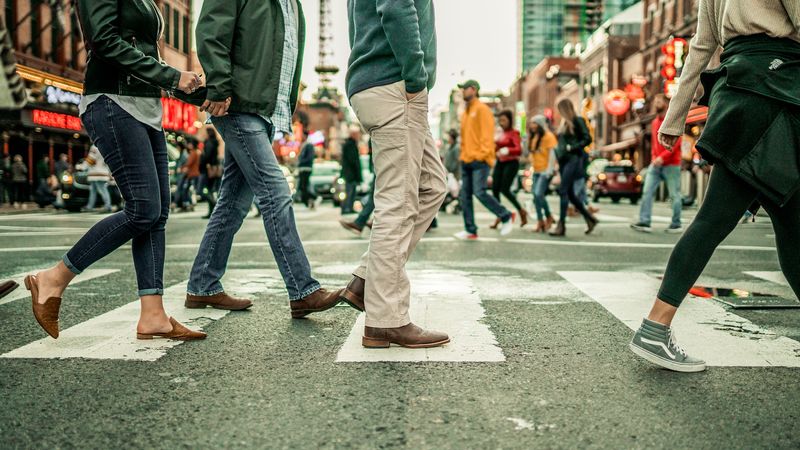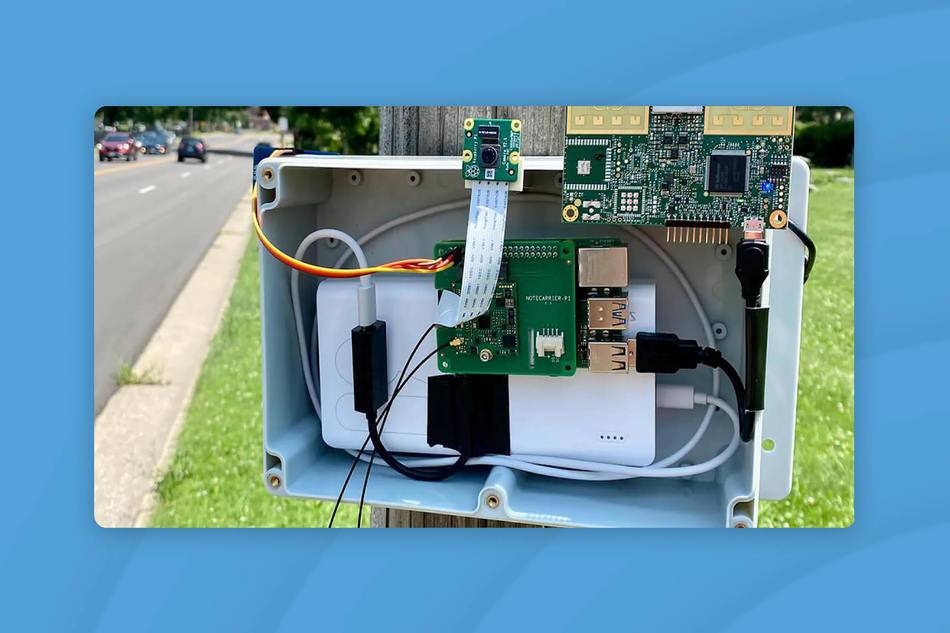Revolutionizing Traffic Safety: The Global tinyML Traffic Hackathon
The tinyML Foundation, Sony Semiconductor, and the City of San José are teaming up to use Machine Learning in improving pedestrian safety

Photo by cody lannom on Unsplash
Introduction
In a bid to address the rising concern of traffic-related fatalities and injuries, the Global tinyML Traffic Hackathon is set to take place in partnership with the City of San José's Vision Zero program. With pedestrian fatalities constituting a significant portion of traffic-related deaths, the hackathon aims to leverage the power of energy efficient Machine Learning (tinyML) to detect pedestrians and create innovative solutions for enhancing traffic safety.[1] This article delves into the key details of the hackathon, the technology engineer’s will be utilizing and its potential impact on traffic safety.
What is the Global tinyML Traffic Hackathon?
San José, the heart of Silicon Valley, is collaborating with the tinyML Foundation, Sony, and the City's Department of Transportation to launch the Global tinyML Traffic Hackathon. “You can help San Jose develop new traffic safety tools to reduce injuries and deaths on our roadways. We’re partnering with tinyML Foundation and Sony to launch a Global Traffic Safety Hackathon focused on developing AI-based systems that can reliably detect pedestrians during the day and night. “ – said Matt Mahan, Mayor, City of San Jose. This digital event running from May 19 to September 15, 2023 brings together minds from around the world to tackle the pressing challenge of pedestrian safety. With traffic fatalities more than doubling since 2012 in San José, there is an urgent need for cost-effective and accurate solutions to detect pedestrians, especially during nighttime conditions.[2]
The hackathon is prompting engineers to develop a tiny ML based solution to detect pedestrians and others. The best ideas will receive cash prizes up to $3000.
If you are an engineer working on with TinyML and have ideas how to increase traffic and pedestrian safety, learn how to submit your project here.
The hackathon is providing lots of reseourses to support entrants including free license to Edge Impulse. Read more about the forums and support here.
For a chance to win the tinyML Challenge you must submit a fully functional pedestrian detection project by September 15, 2023.
The Role of tinyML and Vision Zero
tinyML is an emerging technology that enables machine learning models to run on low-power microcontrollers and microprocessors without relying on network infrastructure. This makes tinyML ideal for deploying smart systems that can improve various aspects of our daily lives. The hackathon leverages this technology to build cutting-edge pedestrian detection systems.
The Global tinyML Traffic Hackathon aligns with San José's Vision Zero program—a city initiative focused on substantially reducing traffic fatalities and injuries. Pedestrians form the largest group of traffic fatalities, accounting for about 17% of traffic deaths in 2021 in the US, with a considerable number of incidents occurring during nighttime.[3] Vision Zero has a goal of zero fatalities on the roads, with San Jose Department of Transportation's Colin Heyne saying that no other goal is acceptable.[4] By harnessing tinyML's capabilities, participants are challenged to devise solutions that enhance pedestrian safety and prevent tragic accidents.
As a new technology that enables machine learning models to operate on low-power microcontrollers without requiring network connectivity, tinyML opens up a world of possibilities for real-time and cost-effective solutions. By running these models directly on edge devices such as cameras and sensors, the need for constant data transmission to centralized servers is eliminated, resulting in reduced latency and enhanced response times.
The Hackathon Challenge and Criteria
The hackathon tasks participants with developing tinyML-based solutions to detect pedestrians and other road users. The primary focus is on accurate detection, especially when pedestrians are difficult to distinguish from bicyclists, particularly at night. The city of San José has provided example locations for participants to consider, including major intersections and areas with significant pedestrian activity.
To ensure a fair and comprehensive evaluation, the hackathon's judging criteria encompass various aspects of the proposed solutions, such as project documentation, relevance to the challenge, complete bill of materials, dataset explanation, model explanations, and performance evaluations. The judging panel will also consider the installation process, maintenance requirements, and creativity exhibited in the solutions.[5]
tinyML and Vision Zero's Impact and Potential
The tinyML Foundation, a non-profit organization, has played a substantial role in promoting TinyML across the globe. With over 16,000 members from 40+ countries participating in the foundation's monthly meetups (tinyML | Meetup Pro), the hackathon has garnered immense attention and engagement. The collaboration with Sony Semiconductor further underscores the industry's recognition of the significance of tinyML in shaping the future of traffic safety.[6]
San José's Vision Zero program, together with the Global tinyML Traffic Hackathon, has the potential to revolutionize traffic safety and significantly reduce pedestrian fatalities. By harnessing the power of tinyML, cameras deployed throughout the city will be equipped with AI software to gather valuable quantitative data about pedestrian presence and movement patterns. This predictive approach allows for proactive measures to be implemented, preventing accidents before they occur.
Collaborating with global communities through the hackathon fosters innovation and knowledge-sharing, leading to cutting-edge advancements in traffic safety technology. The winning solutions stand to receive substantial cash prizes of up to $3,000, with additional recognition for the best use of Edge Impulse technology.
Conclusion
The Global tinyML Traffic Hackathon, in collaboration with the City of San José's Vision Zero program, represents a practical step forward in the journey towards improving traffic safety. With the collaboration of leading organizations and bright minds from across the globe, this hackathon has the potential to develop groundbreaking solutions in traffic safety, reducing fatalities and injuries, and making streets more intelligent. This exciting event is a testament to the fact that innovation, collaboration, and technology are the keys to a future with zero traffic fatalities.
Participants in the Global tinyML Traffic Hackathon are reminded to submit their fully functional pedestrian detection projects before the final deadline on Friday, September 15, 2023, for a chance to win the coveted tinyML Challenge and cash prizes of up to $3,000.
For all the details and to join the contest, click here. Check out the first event information talk here.
Edge AI Technology Report
The tinyML foundation recently partnered with Wevolver to launch the Edge AI Technology Report, this report, contributed by leading industry experts and researchers, aims to provide a thorough overview of the current status of AI.
Click through to read each of the report's chapters.

